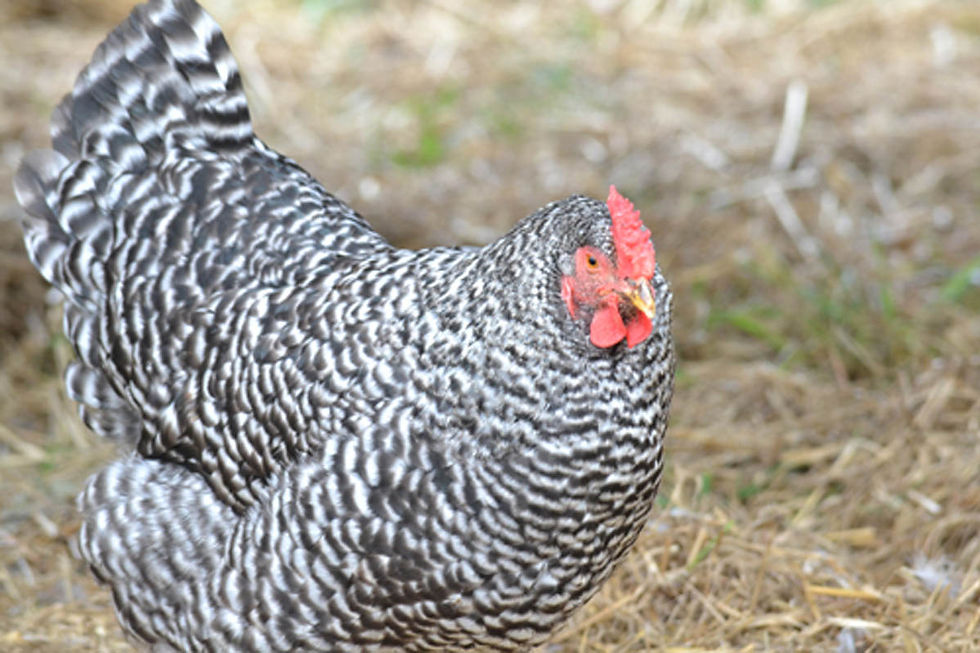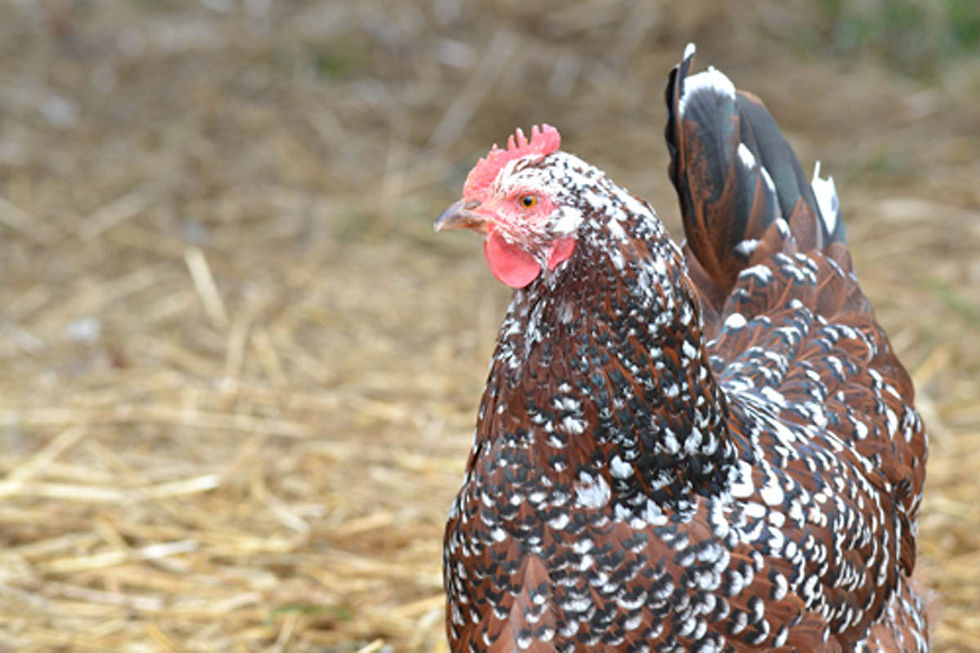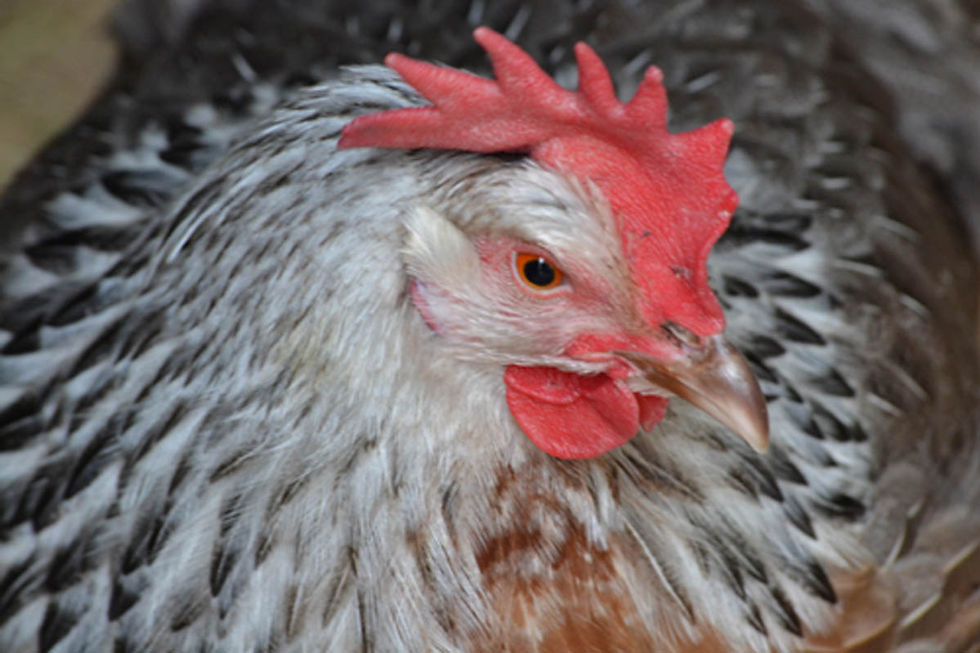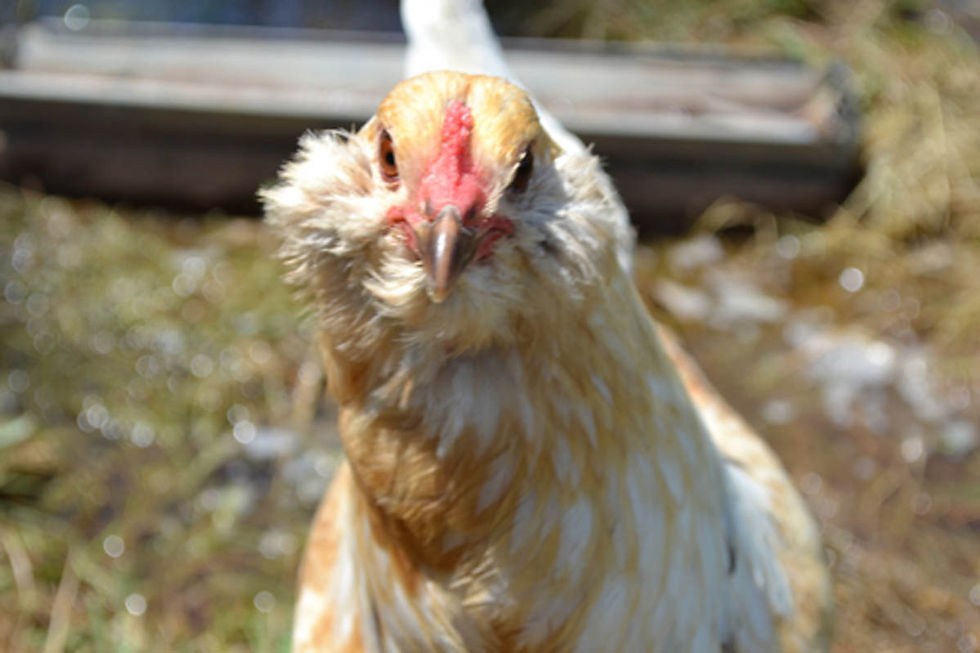A Peek Inside the Hen House
- Accokeek Foundation

- Mar 17, 2016
- 3 min read
Among my list of favorite things about working at a farm is that from my office window I get to enjoy a bird’s eye view of the barnyard. This means I get to watch a lot of exciting distractions throughout the day — escapee lambs running wild in the yard, chickens free ranging under my window; I’ve even been greeted by a hog once. Never a dull day at the farm!
High on the list of favorite things is definitely watching the heritage hens free range and be chicken-like.
One afternoon I noticed that Polly, our livestock manager, was having a particularly challenging time getting all of the hens back into their coop for the evening, so I helped. (I’m always eager for the break from the computer screen!) With Polly at the coop guarding the door I rounded up the stragglers. Our dialogue at this point was what inspired this blog post:
Polly: Is that all of them? Me: Yes, a spotty chick, fluffy cheeks, fuzzy feet, and the Dominque. Polly: Strangely, I know exactly which breeds you’re talking about!
If you’ve visited the farm this year, you’ve likely to have encountered a few of the heritage chickens ranging freely around our barnyard and offices, each with their distinctive characteristics and personalities. While it’s easy for those who work with the animals regularly (like Polly) to know each animal, including the many breeds of chickens on the farm, for the rest of us it’s not so easy. To help with the identification of the chickens seen at the farm, below is a helpful guide along with my personal translations:
aka: “Dominique” I know these ones so I don’t have an alternative name for them, though they look similar to the Plymouth Barred Rock (or Rock Chick).

Sussex (Speckled)
aka: “Spotty Chick” From a distance it looks like it has spots on it.

Brahma (Light)
aka: “Fuzzy Feet” This one confused me the most. The light variety of the Sussex above is very similar to ol’ Fuzzy Feet here which looks similar to Delaware chickens, so I gave up trying to remember. But as you can see the Brahma sports leg-warmers, so Fuzzy Feet she shall be!

aka: “Kaleidoscope Chickey” A rare bird of Dutch origin, lays beautiful dark brown eggs. In the sunlight their colorful feathers have a “sparkle” to them which is why I call them Kaleidoscope chickens.

Dorking (Silver Gray)
aka: “Laced Neck” Her neck feathers look very Elizabethan: lacey and fun! She’s majestic and thinks that she is of higher nobility than the others. This is why she has taken up residence in the barn where she can live like a queen instead of in the coop with the common-folk! Ashley calls them Dorks. I don’t think the Queen likes that.


Easter Eggers (Ameraucana/Araucana)
aka: “Fluffy Cheeks” These are among my favorites of all of the breeds. Their cheeks, they’re so fluffy! Like Col. Burnside and his mutton chops. They are called Easter Eggers because they lay a pale blue/green egg.

This is another Fluffy Cheek chicken with different coloring. She’s showing off a bit here.

So, why all the different chicken breeds you ask? Two years ago, when our farmers decided to try their hand at egg production, Polly chose a variety of chickens who would produce a colorful array of eggs — from dark spotted brown, light brown, white, and blue/green. The result is a unique brand of eggs that are sold at the farm! Because our ladies are free to roam, these eggs are both delicious and healthy with a deep orange yolk (the sign of a healthy and happy chicken!).
On your next visit, stop in the visitor’s center, pick up a carton or two (or three!), then meet the chickens who laid your eggs!

photo credit: Jessica Burton







